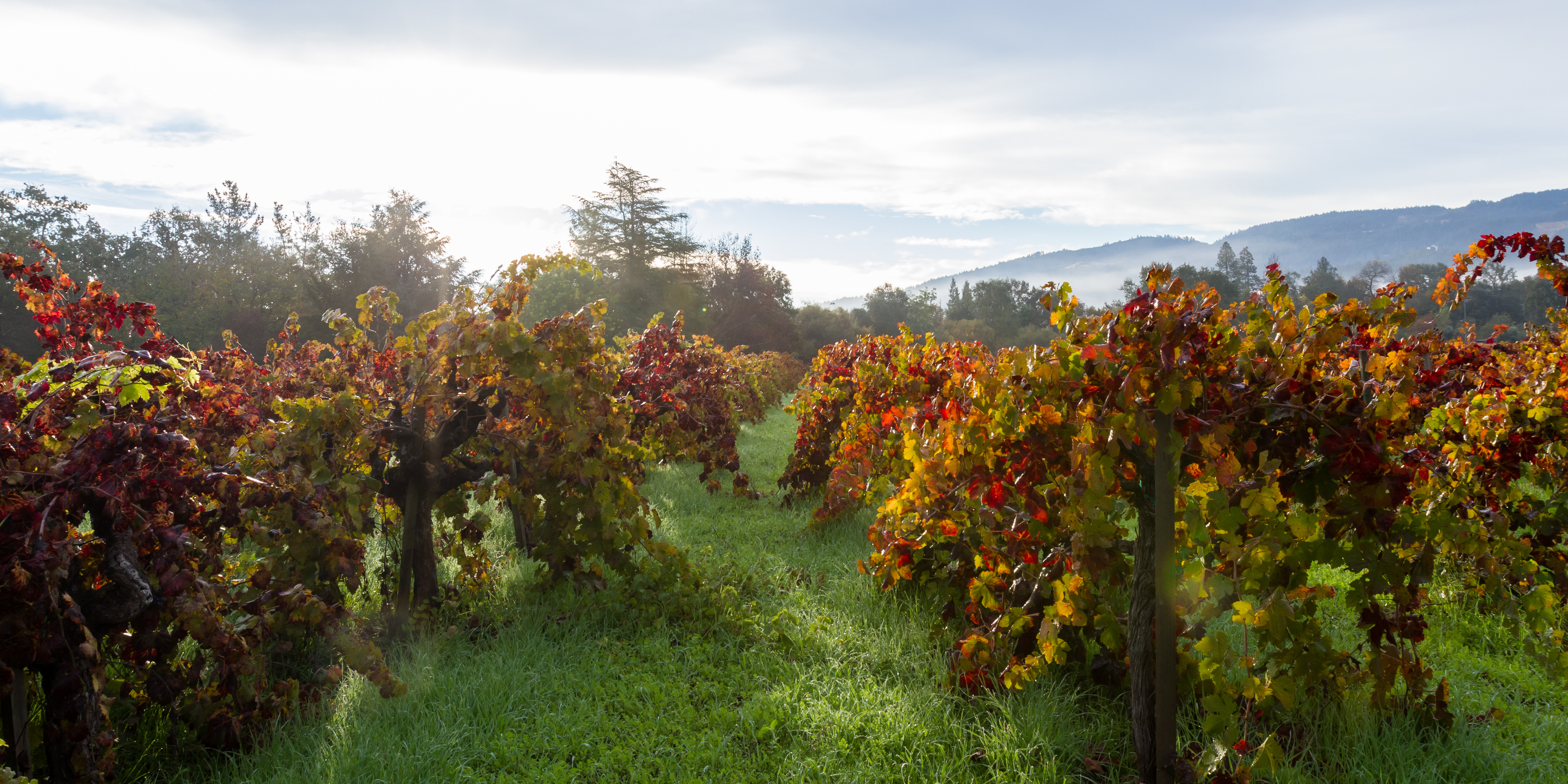Situated in the northernmost reaches of Napa Valley is the sub-appellation of Calistoga. Established in 2010, Calistoga is the home to the highest rate of steep slopes to valley floor of any AVA, meaning warm to hot days, cooler evenings, better drainage from the soils, and subsequently higher concentration and power to the fruit. We will keep hammering this point home: great wine is made on the vine, not in the winery. Calistoga – on paper – is that place.
A desirable climate assists in the “great wines on the vines” with summer days reaching highs in the 90s (great for ripening) and lows in the 50s (locks in the acidity) – the highest diurnal swing in the entire Napa Valley. In the afternoons and evenings the Pacific breeze (ushered in by the Russian River) sweeps through the area to cool it off. The high mountains protect the area from the higher humidity that can plague the more coastal regions descending the western side of the range.
In addition, Calistoga sits pretty high in comparison to the rest of the Napa Valley with the lower vineyards planted at around 300 ft. above sea level and the highest vineyards around 1,200 ft. above sea level. This aids in the warmer days, cooler nights balance – which in turn balances the fruit, but the second part to that equation are the soils and the history of the area that created the altitude. Calistoga is almost exclusively volcanic in origin. Volcanic soils make for excellent drainage and grape roots love to bury themselves deep in these soil types. The hills are mainly rocky, stoney loam, the alluvial fans are composed of gravelly, cobbly loam, and the valley floor is composed of heavier clay silts. This volcanic soil also assists in less “green growth” allowing the vines to focus their energy on developing the fruit.
Rainfall is also in favor of the growers in Calistoga. Over all of Napa Valley, Calistoga sees the largest amount of rainfall annually (especially for the higher elevations) resulting in deeper water beds for the roots to draw on. This allows some farmers to practice dry farming while achieving optimum results. Average annual rainfall clocks in around 38.5″ with roughly 6″ during the growing season.
One last point to boast about is the consistency of the climate in Calistoga. Of all of the Napa Valley, Calistoga has the most consistent climate which allows the winemakers to produce very consistent wines from vintage to vintage.
All the boasting and bragging about how great the region is finds roots in the historic Judgement of Paris. At the blind tasting, a Calistoga winery by the name of Chateau Montelena took first place in the white wine section with their 1973 vintage of Chardonnay (winemaker: Mike Grgich), upsetting the judges and the famous Burgundy houses. All the top scores either went to Chateau Montelena or the 3rd place winner, Chalone.
From a production standpoint, Calistoga has a total area of 12,713 acres, with around 600 acres of plantings. The primary planting in the region is Cabernet Sauvignon at around 43% followed by Zinfandel, Merlot, Cabernet Franc, Sauvignon Blanc, Petite Sirah, Petit Verdot, Chardonnay, and Syrah amongst others.

